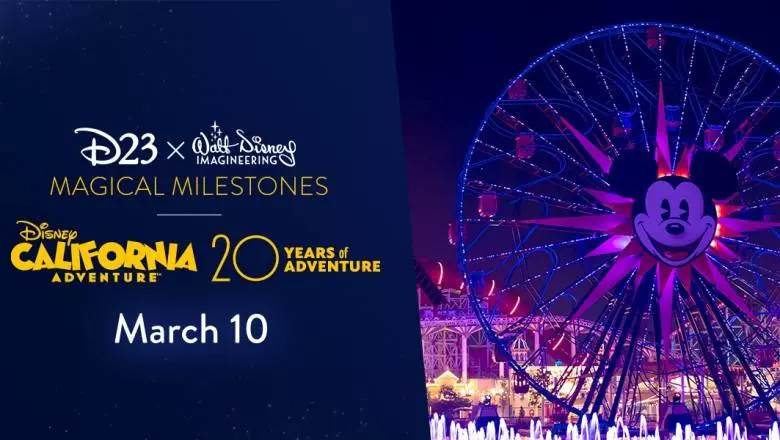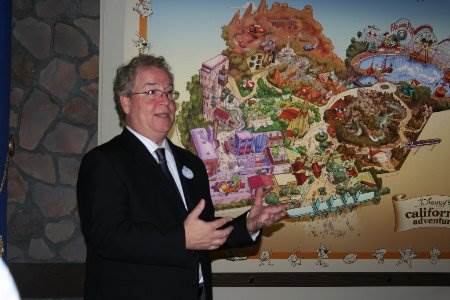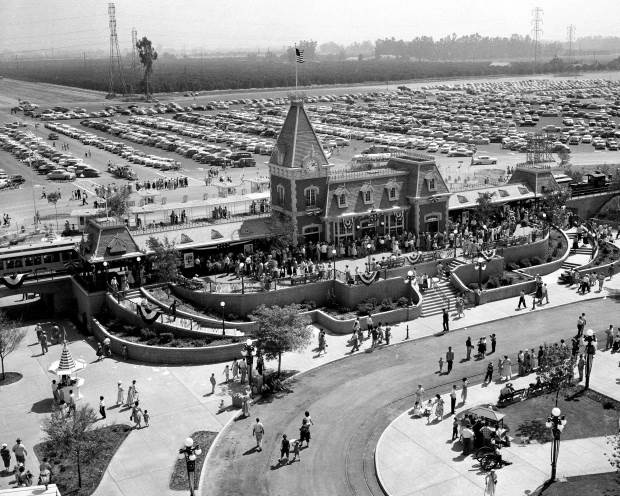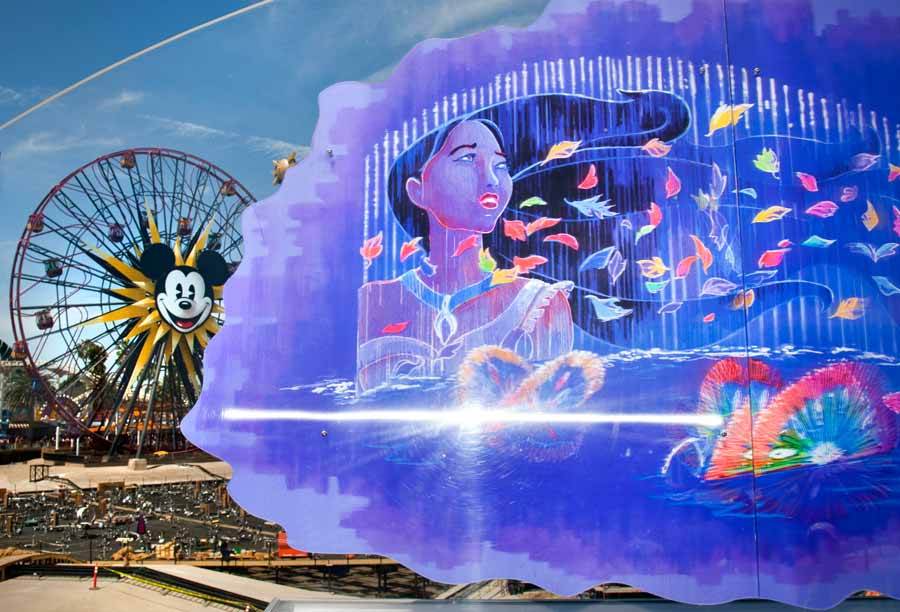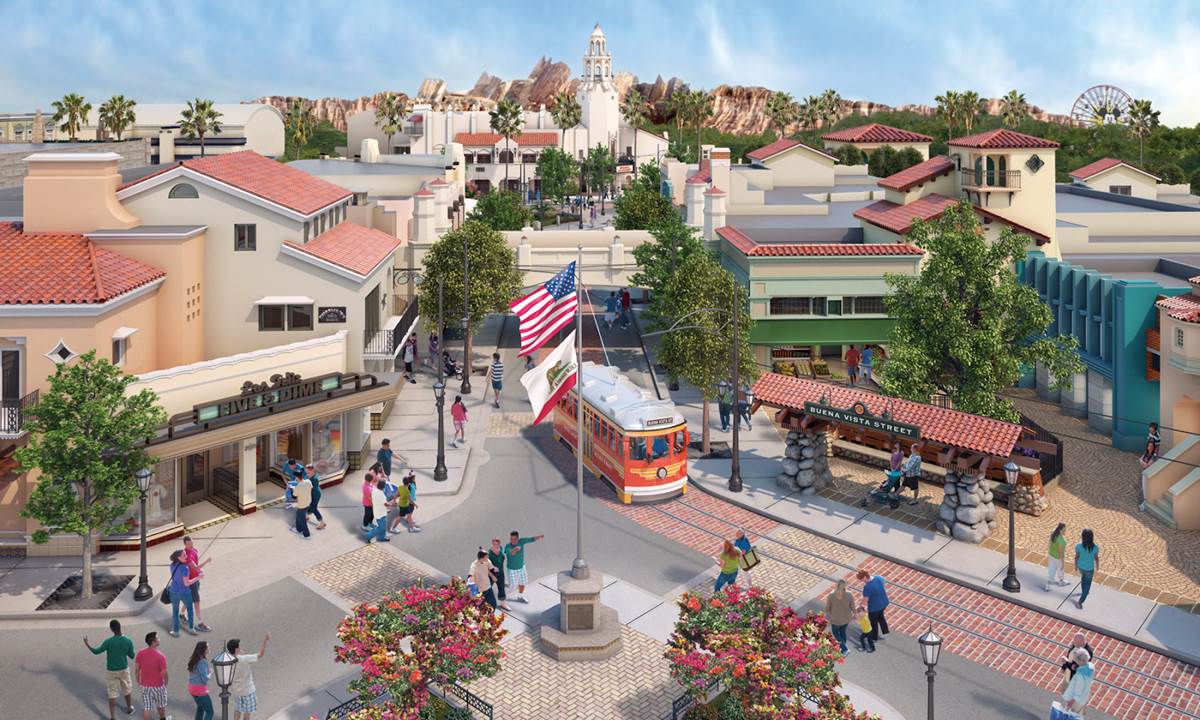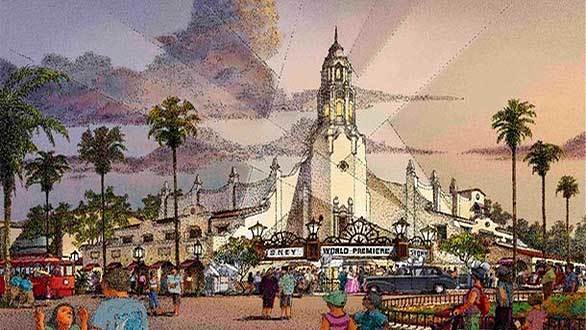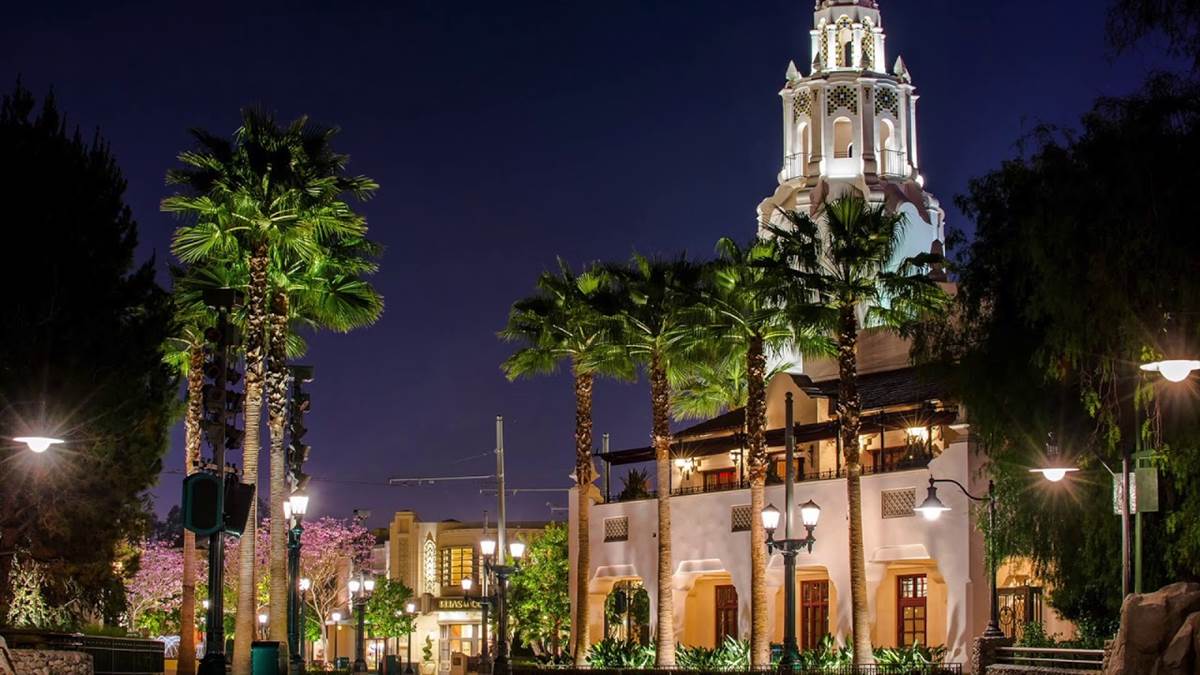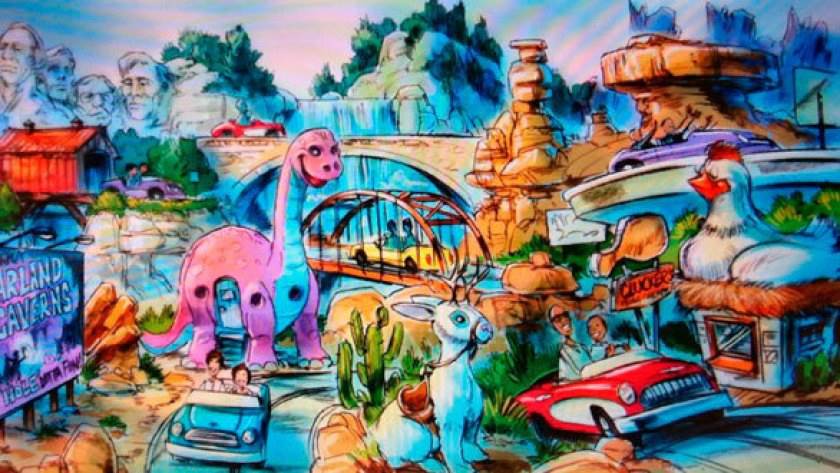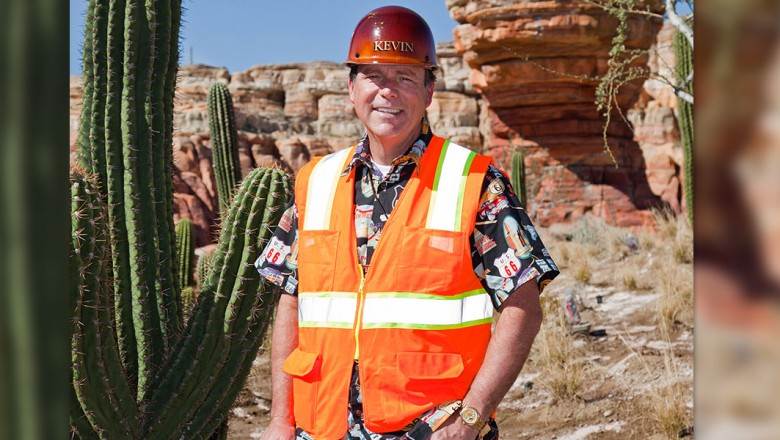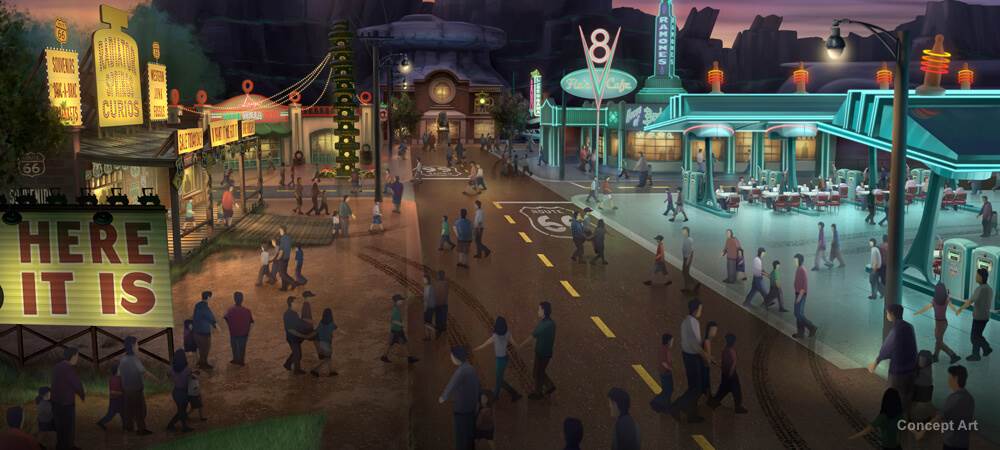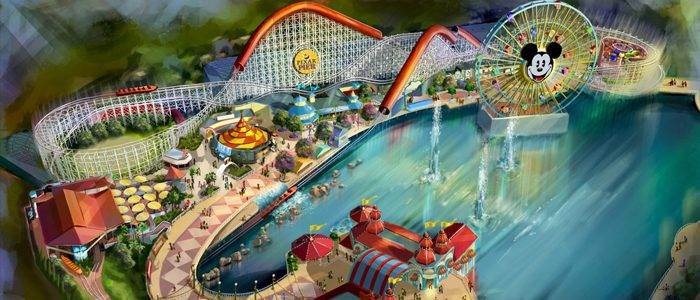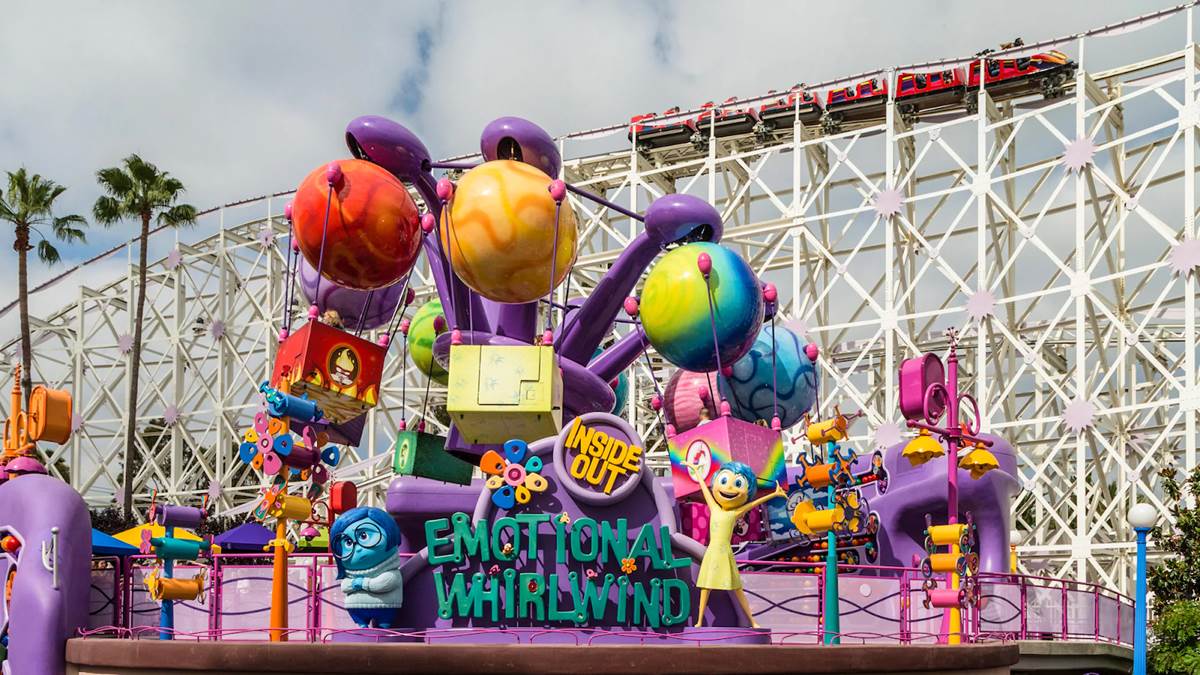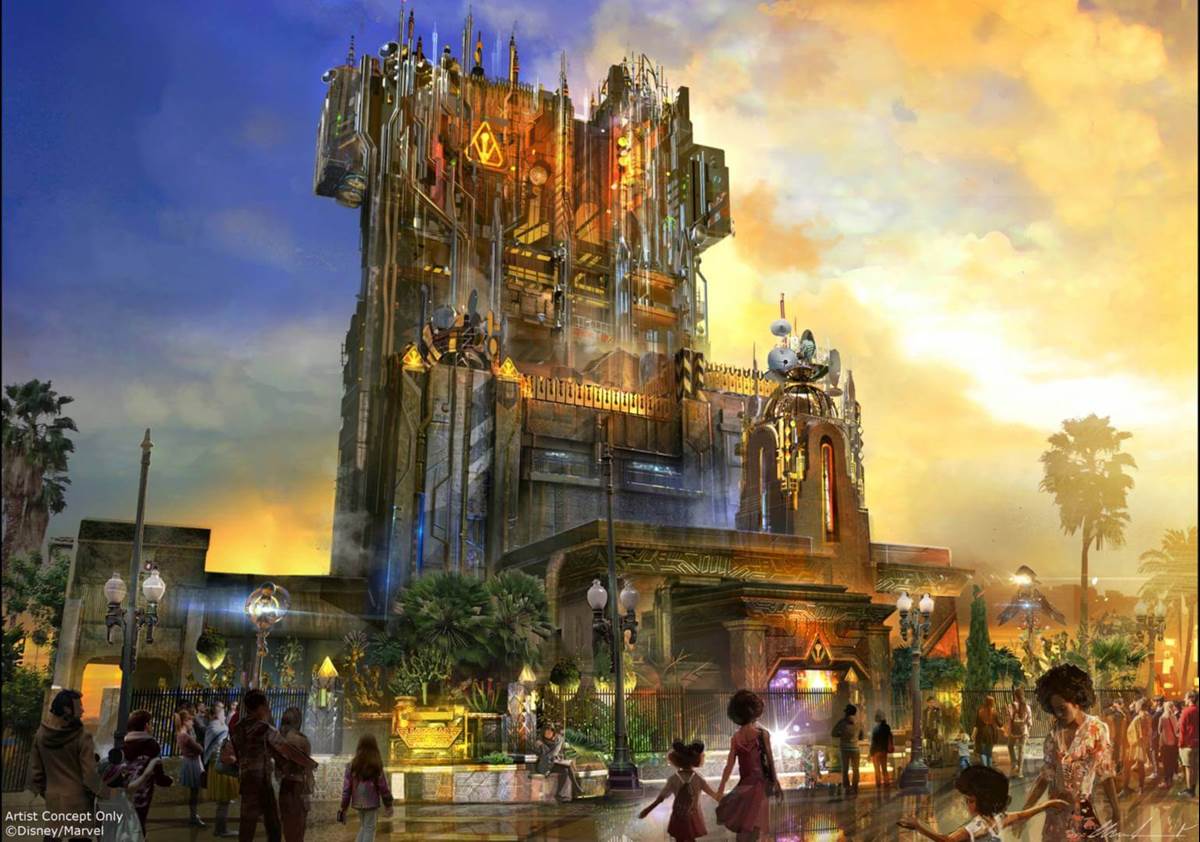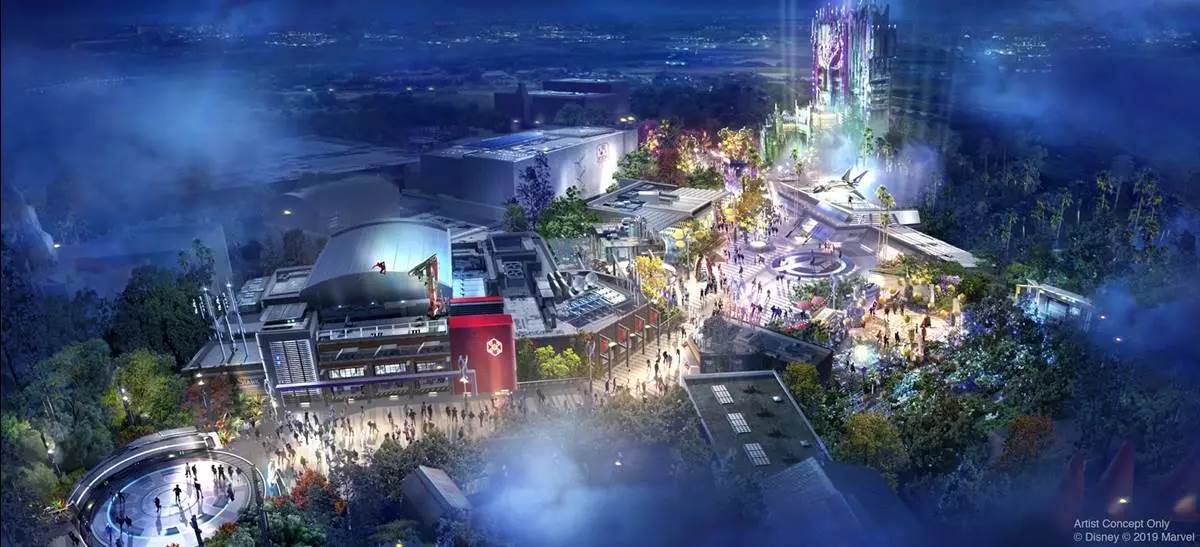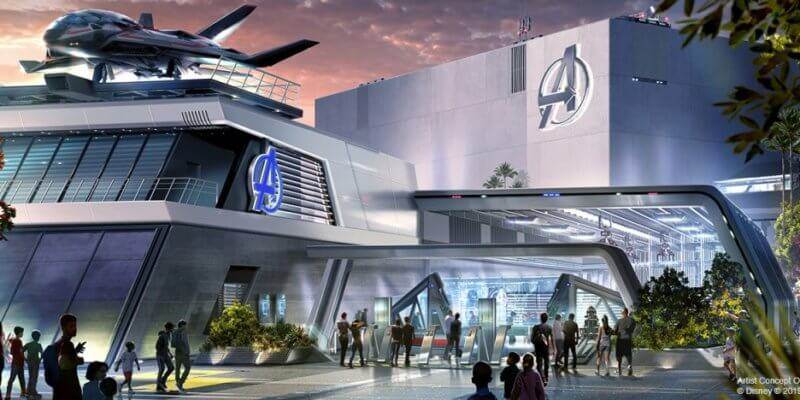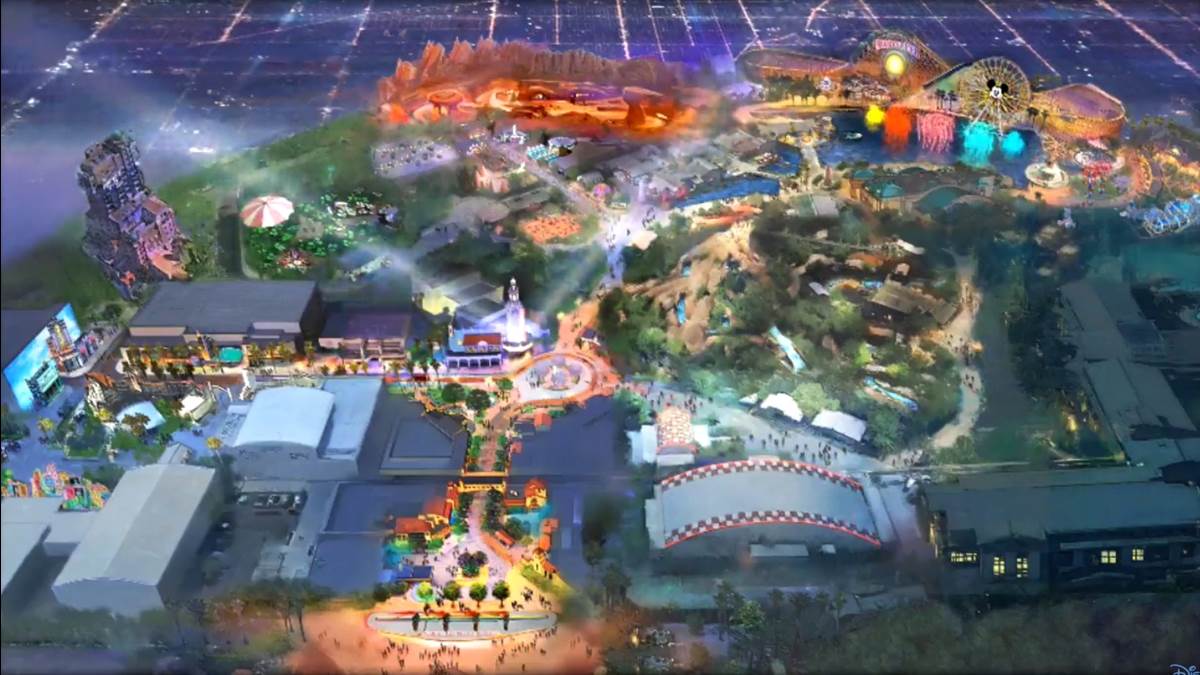What We Learned From D23’s Magical Milestones: 20 Years of Disney California Adventure
D23, the official Disney fan club, has teamed up with Walt Disney Imagineering and is planning a series of Magical Milestones events. The first of these was a virtual event that celebrated the 20th anniversary of Disney California Adventure, and it was promised that it wouldn’t be the last. While the event was a retrospective of the park, as well as a glance to the future, there were still a few fun things that we managed to learn from this presentation.
The presentation, hosted by Leslie Iwerks, director of The Imagineering Story, was full of special guests, including:
- Steven Davison, Executive Parades & Spectaculars
- Scot Drake, Portfolio Creative Executive
- Tom Fitzgerald, Portfolio Creative Executive
- Roger Gould, Creative Director of Franchise Management and Parks Integration for Pixar Animation Studios and Walt Disney Animation Studios
- Lynne Itamura, Executive Interior Design
- Jeanette Lomboy, Site Portfolio Executive for the Disneyland Resort
- Kathy Mangum, Retired Imagineering Executive
- John Mauro, Portfolio Producer
- Jeff Shaver-Moskowitz, Executive Producer
- Tracey Noce, Concept Design Director
- Kevin Rafferty, Executive Creative Director
- Brent Strong, Executive Creative Director
- Steve Spiegel, Executive Story Editor
- Susana Tubert, Creative Director of Live Entertainment at the Disneyland Resort
- Bob Weis, President of Walt Disney Imagineering
- Claire Weiss, Creative Director
First up was Bob Weiss, current president of Walt Disney Imagineering, to talk about the history of the park. For the uninitiated this was a very candid (in Disney terms) look at the first version of the park, citing its weak points and even mentioning its origins as WestCOT, calling it “a great dream. A fantastic dream.” He also mentioned the decline of the Anaheim environment, mentioning the increase in crime and other socioeconomic factors, saying that really they had to work with the City of Anaheim before anything could really get started to expand.
Aside from that, the usual story we’ve heard when it comes to the history of the park was repeated. The park was inherently flawed, and Weiss pointed out that what they set out to do by making the park decidedly different than the neighboring Disneyland was their biggest mistake. This included anything in the realm of fantasy, everything had to have its roots somewhere in reality. He also added that the then CEO Michael Eisner had a fascination with showcasing how things worked and were made, whether it be in the form of a studio tram, or a look into a sourdough bread factory. Characters would mostly stay in the neighboring kingdom, as to be deeply differentiated, they also didn’t want to tread on Disneyland’s already existing territory. Leslie pointed out that adults did love the decision to include alcohol in the park, which Weiss pointed out proved original theories, that it would bring certain undesirable elements to the park, were unfounded. Weiss also pointed out that the Imagineers who worked on the original incarnation of the park are some of the best around because they were tasked with building a new theme park in the most challenging location to build a theme park on the entire planet, right next to Walt Disney’s original masterpiece, Disneyland.
After that, Tom Fitzgerald quickly went over the transition into transforming the park from where it didn’t work into where they think it would have. He mentioned that the main inspiration came from the plaque above the entrance tunnel: “Here you leave today and enter the world of yesterday, tomorrow, and fantasy.” They would use this as a cue to address all the problems in the park, using Condor Flats as an example, saying here you have a real authentic desert facility that was just that. A desert. A hot, uncomfortable desert that was home to one of the most popular attractions at the park. So to add more of the fantasy and charm, they took it back to the nostalgic national park feel and extended out the Grizzly Peak area and absorbed Condor Flats, retheming it into the Grizzly Peak Airfield.
Fitzgerald mentioned that Disney’s California Adventure was home to some of the most popular attractions at the Disneyland Resort, attractions like California Screamin’ and Soarin’ Over California, but the park was never as popular as they wanted it to be with the guests. They would show up for their favorite attractions, and then head over to Disneyland, especially for the park’s nighttime entertainment like Fantasmic!, or any of the nighttime fireworks spectacular. One of the requirements of the new park enhancements would need to be a nighttime show that would keep guests at the park in the evening, and the tired Electrical Parade wasn’t doing it.
In probably my favorite conversation of the entire program, Steve Davison discusses with Leslie Iwerks the genesis of World of Color. Davison mentioned that they created the show under the guidance of a few rules: It can’t have human performers, it must be able to performed multiple times a night, and it has to be spectacular. While he doesn’t get into the original story premise (more on that can be found here) he does elaborate on how he and his team would study fountains around the world and realized, yeah some of them had incredible lighting underneath, but none of them ever incorporated color.
He said they had no real experience programming fountains, but they did with lighting, so they designed and built a lighting platform with fountains taking the place of programmable lights. The tests proved so successful, that a platform featuring 1200 fountains the size of a football field was built in the main lagoon, with the platform design now being the industry standard.
But now they have the technology figured out, what do they do with it? They wanted to insert a lot of Pixar properties into the show, as they have not been represented much elsewhere in the Disney Parks, picking the journeys of evergreen properties and emotional and classic moments that can tie beautifully into the show. Programming the show once it was assembled also led to new accidental discoveries.
Davison tells the story of an effect that was born because the laser programmer had simply left a laser on while a fountain programmer was working. Davison was watching and saw the fountain hit the top of the lazer and you “suddenly had this beautiful thing” where everyone was asking how it was done, and it “was chocolate and peanut butter.” A complete accident. The opening was changed to showcase this beautiful new effect, which also appears in the Wall-E segment of the show.
Davison also tells the story of rehearsing and programming the show one night while in the performance corridor, the parade staff was rehearsing Disney’s Electrical Parade. Going over to a captain that he knew, Davison invited the performers to come watch the work-in-progress that was World of Color, saying they knew they were on the right track when “the kids” loved it, cheering at the right spots, crying at the right spots, and generally showing the emotions they were hoping for while sculpting the show.
Davison also reflects on a happy but intimidating one word response from Then-CEO Bob Iger after the initial pitch of the show, a very excited “When?” As in, “when can it be ready?” The new Little Mermaid: Ariel’s Undersea Adventure had been pushed back, and now World of Color, originally set to be #2 in line for the major changes coming to DCA would now be #1 ushering in the new era of the park, and giving the park the nighttime spectacular it desperately needed.
It was much later in the program that Jeanette Lomboy, Site Portfolio Executive for the Disneyland Resort spoke and subtly introduced the new pillars of DCA that would be taken into consideration for any new project at the park:
Innovation
Adventure
Discovery
Diversity
Though introduced later in the program, you could see how they were implemented in the two major pieces of the five year relaunch of the park in 2012, Buena Vista Street and Cars Land.
Buena Vista Street was the first time a Disney park had redone an entire entryway, but Lynne Itamura, Executive Interior Designer, said the most challenging part of the project was not just simply recreating the Los Angeles that Walt Disney would have arrived in, but the Carthay Circle Restaurant that would become the icon of the new area, and perhaps even the park. Countless photos exist of the exterior of the theater where Snow White and the Seven Dwarfs premiered in 1937, but according to Itamura, her team found maybe three photos after countless amounts of research of the actual interior of the building. So the team looked at other restaurants of the era for style choices to reflect a sort of party atmosphere that some Hollywood types would have gone to after the Snow White premiere. She said that one thing they felt that they must include were exclusive “power booths” where some of the Hollywood elite and their accompanying parties or entourage would join in.
She also talked about how Buena Vista Street has a subtle parallel to Walt Disney’s Career, with some of it being more humble mom and pop shop designs as you enter the park, moving more towards commercialized buildings like the Five and Dime, building up to the end of the street where the grand and majestic Carthay Circle lies.
Elsewhere in the park, Imagineer Kevin Rafferty and his team were working on a new expansion that would focus on California car culture and Route 66, Car Land.
According to Rafferty, while developing this new area slated for an area that he and WDI Colleague Kathy Mangum once parked their own car in while working at the Disneyland Resort, a new movie was in development at Pixar Animation Studios called Cars. Rafferty learned of the film while making early progress on what would become Toy Story Midway Mania, and went with some of his team up to Pixar to see if there was anything from Cars that could be incorporated into the new Car Land. Long story short, the “S” from Disney’s California Adventure went on to become part of the moniker, Cars Land, at now Disney California Adventure. Rafferty and the team immediately fell in love with the film, and the entire team took a road trip down Route 66 to develop the land. After all, the film Cars mostly shows you the exteriors of the buildings in Radiator Springs, what do the interiors of say, the curio shop look like. That research was all done in a super rare business trip to be in a car, along the very reportedly very hospitable Route 66.
Cars Land falls into those pillars, especially that of Adventure. While even though an authentic desert environment similar to what Fitzgerald said had to go with the removal of Condor Flats, this new desert town was completely immersive, transporting guests to another time, place, and world to retell the story of Cars. So much so that some will argue it still outshines Disney’s newer attempts at immersive environments, including Pandora: The World of Avatar at Disney’s Animal Kingdom, and Star Wars: Galaxy’s Edge at neighboring Disneyland, and Disney’s Hollywood Studios at Walt Disney World.
Others will also say it continues to outshine new projects at DCA still. Lomboy said that Buena Vista Street and Cars Land “really just elevated our game” in terms of design at the park. She then tells the story of how the team was looking at California Screamin’, still one of the most popular rides at the entire resort, and how they felt the need to inject a Disney Story into the attraction that didn’t really have one, found out that Incredibles 2 was in production, and rode the attraction wearing a headset playing Micheal Giacchino’s score from the original film. From that experience, they were taken aback and thought “wow, how do we turn this into a 90 second story and make it a uniquely Disney experience.” The answer became the Incredicoaster, which Lomboy admits she still laughs the entire time while riding.
This also led to the entire retheme of Paradise Pier. But why?
As was already mentioned, the team had it in their mind that California Screamin’ could now be rethemed to The Incredibles to add that layer of Disney to add to the experience, and they already had the already popular Toy Story Midway Mania nearby. Jeff Shaver-Moskowitz, Executive Producer said “so you start to see that this picture is being painted of what it would be like to make this uniquely Disney land by bringing Pixar stories to life.” More jarring were his comments about how it ties into the overall California theme of the park, “Anchoring it into a California story of seaside piers, but also the very California story of Pixar and its animated films.” While that wasn’t the most jarring of these stories throughout the presentation (that comes later), Roger Gould describes that the whole concept was difficult because Pixar isn’t a story. It’s multiple stories. So the idea of “neighborhoods” (Incredibles Park, Toy Story Boardwalk, Pixar Promenade, and Inside Out HQ) was developed, focusing on multiple stories in one broad expanse of a land.
They said the land also helped more Pixar stories never seen in a Disney Park be injected, including Inside Out, Coco, and even The Incredibles. Inside Out was determined as the story to be involved in a family attraction at one end of the boardwalk, because the emotions appealed to everyone in the family, so it was selected as the attraction without a height requirement that all could ride.
But Pixar Pier wasn’t the last example of the injection of synergy and tying attractions to relevant stories the presentation would discuss. For the next, we head across the park back to the outskirts of Hollywoodland.
“What, what are we doing? Why?” Imagineer John Mauro reportedly said when Bob Weiss called him about changing one of the highest rated, popular attractions at the park (The Twilight Zone Tower of Terror) and adding a Guardians of the Galaxy overlay. Citing those aforementioned pillars, Imagineer Claire Weiss said “Unlike Disneyland, which is really about nostalgia and certain ‘time and place’ stories...[DCA] is about energy and diversity. Where [Tower of Terror] maybe felt at home in a different park, for us it was the perfect place to inject energy. Guardians of the Galaxy franchise itself is Irreverent, subversive, it’s wild, it's fast, and we wanted to do something with that because that energy aligns with the park.”
Mauro added that the situation presented a challenge, how do you take this already extremely popular attraction and make it as good as, if not better than, the original? Add to that, a limited time frame, where they have to do it quickly and well, needed to debut alongside Guardians of the Galaxy Vol. 2. Claire Weiss said the design process was all visual storytelling, having to scrap more traditional WED Processes to get the job done. “Massive Ingenuity, Massive Creativity.” And really, the attraction was considered a “down payment” for a new expansion that is on its way...
Under development and construction for about five years, Avengers Campus proved to be easier than anticipated according to Steve Spiegel, Executive Story Editor, because the Marvel Superheroes are “like The Muppets. They live in our world. In some ways, we can put them anywhere on Earth and it makes sense for an Avengers land.” But as for why they belong in Disney California Adventure? Spiegel says “Tony Stark has a house in Malibu, the Pyms live in San Francisco, and Stark Industries is in the South Bay. There are a lot of roots in California for the Avengers throughout their history already.”
Despite Lomboy’s insistence that DCA is different and a counter to Disneyland, Brent Strong, Executive Creative Director, points out that so many parts of DCA are a fantastical and nostalgic “look back,” but Avengers Campus has a spirit of innovation that allowed the opportunity to create DCA’s equivalent to Disneyland’s Tomorrowland. Really looking forward and tapping into the Silicon Valley and inventors like Stark. Mauro adds that hopefully it will be like a real Tomorrowland that is never complete, and is always changing with the addition of new characters as the Marvel Universe continues to grow.
Spiegel adds that it’s also different because it’s not the usual “This is a top secret environment the guests are sneaking into” but the heroes have invited guests because they know the world needs more heroes.
Speaking on WEB Slingers, the new Spider-Man attraction for the land, Scot Drake, Lomboy, and Strong all decided they need an attraction with no height restriction for the smallest of kids to enjoy, including their own.
The attraction will allow guests to sling webs with Spider-Man, with Strong saying they knew they were on the right track and his three year old son (who had no previous exposure to a Spider-Man movie or comic book) saw the trademark web slinging pose while his dad was working, and said “Oooo Spider-Man!”
The whole team also promises, thanks to the time allotted by the global pandemic, that there are tons and tons of easter eggs hidden throughout the WEB Slingers attraction, so guests can “connect the dots” on how everything is interconnected to the Marvel Universe.
It has been a very busy 20 years for Disney California Adventure, and the ride has been more thrilling and surprising than any attraction at any park anywhere. We celebrated the 20th anniversary of the park with several articles, as well as being on scene as best we could be, and you can check that all out at the links below!
DCA 20th: Laughing Place Staff Share Their Favorite DCA Memories
DCA 20th: Looking Ahead to Marvel Adventures at Avengers Campus
DCA 20th: The Opening Ceremonies and Specials of Disney’s California Adventure



